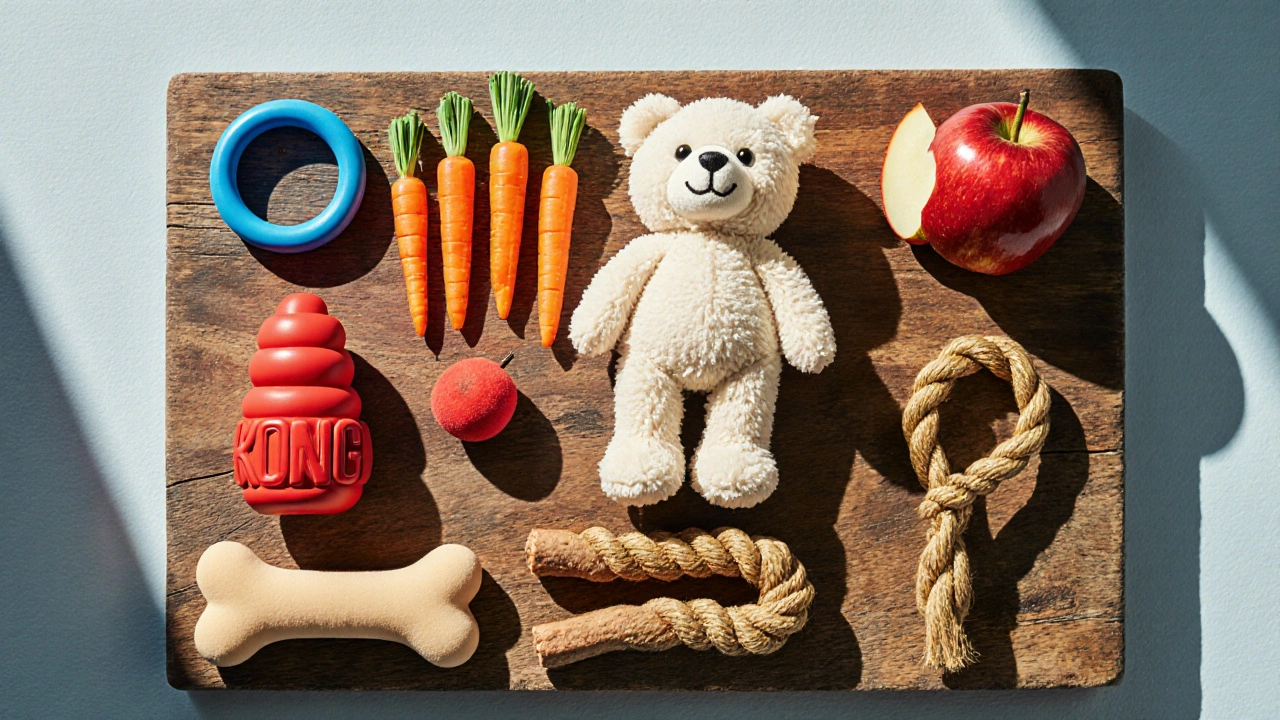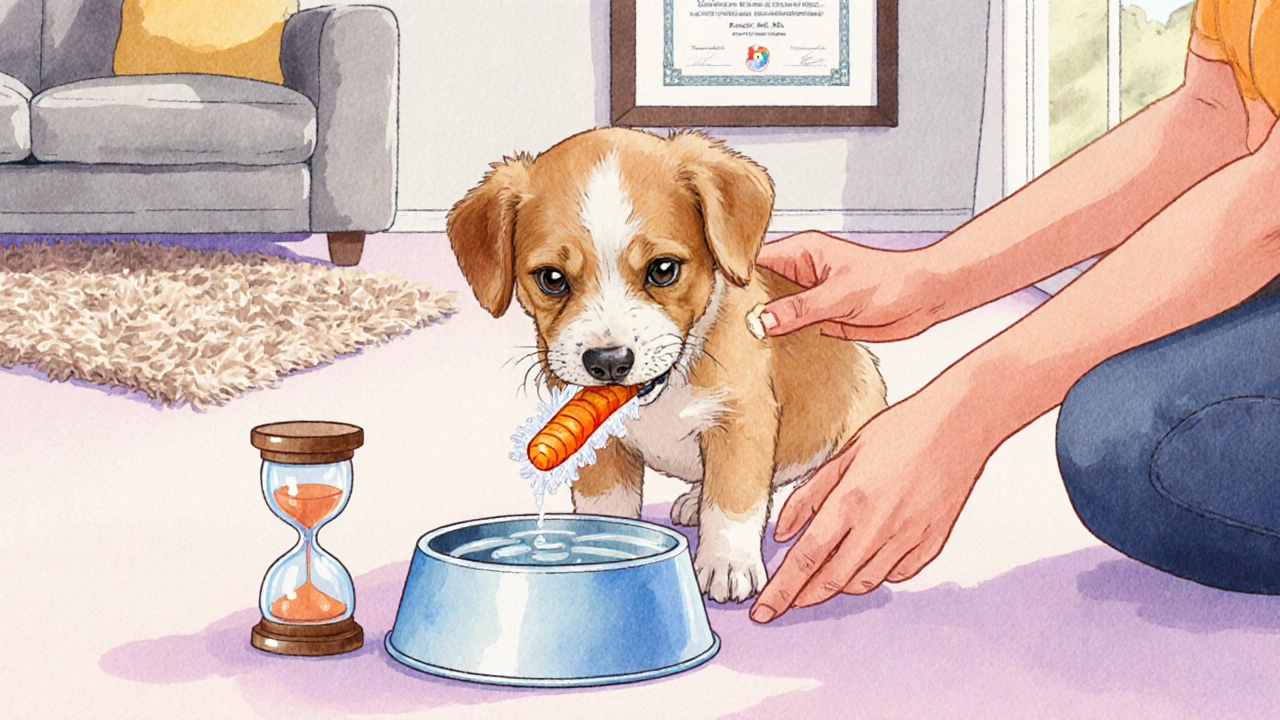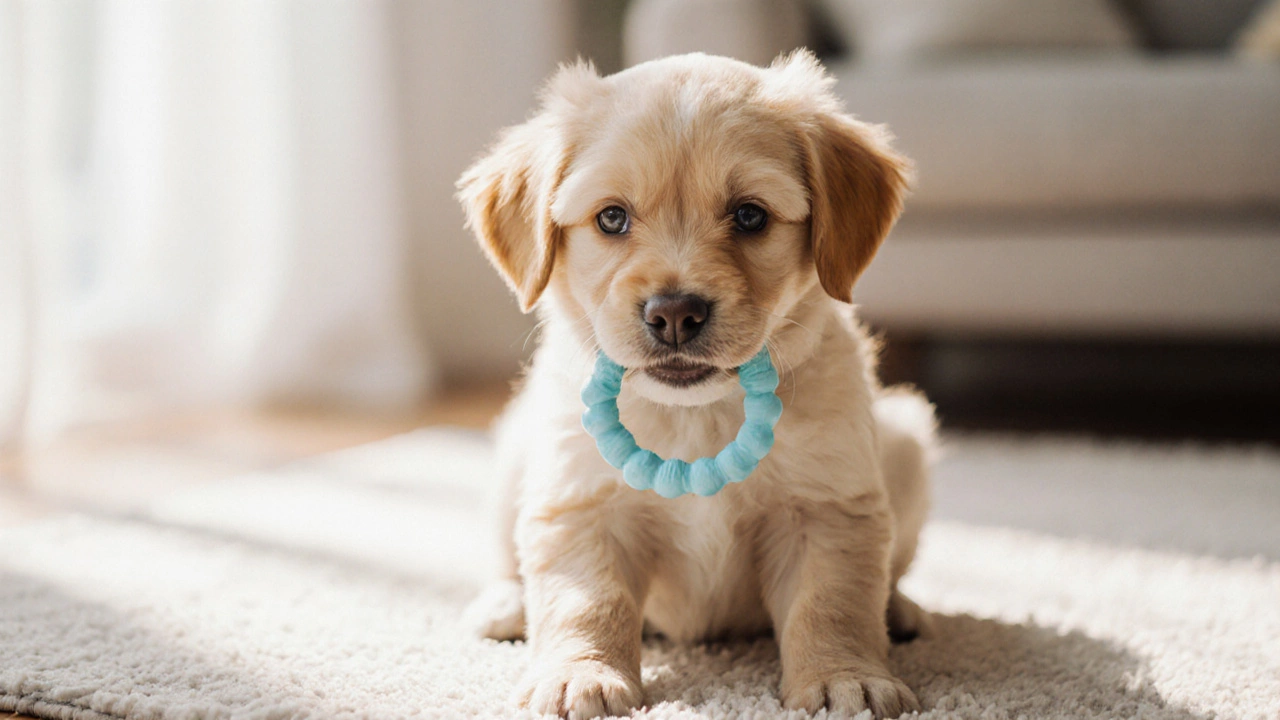Got a brand‑new 8 week old puppy chew dilemma? Your tiny companion is at the teething stage, and everything that feels good in their mouth can become a gamble. Below you’ll find a practical guide that tells you exactly which items are safe, how to pick the right ones, and the red‑flags to keep out of reach.
Quick Summary
- Stick to soft, size‑appropriate chew toys made for puppies.
- Frozen fruits and veggies (e.g., carrots) are soothing and nutritious.
- Avoid anything hard, small enough to swallow, or made of rawhide.
- Supervise every chewing session and replace worn items promptly.
- Consult your vet if you notice excessive gum bleeding or digestive upset.
Understanding Puppy Teething
At eight weeks old, a Puppy is a young dog still developing its adult teeth, which usually erupt between 3 and 6 months experiences the same uncomfortable sensation humans feel when their baby teeth fall out. Chewing relieves that pressure, eases sore gums, and encourages healthy jaw development. However, a puppy’s bite force can still be surprisingly strong-up to 30psi-so the items you hand over must be both gentle enough not to damage teeth and sturdy enough not to break apart into choking hazards.
Safe Chew Options
Below is a curated list of items that meet the dual criteria of safety and enjoyment for an eight‑week‑old puppy.
- Puppy teething ring a rubber ring designed with ridges to massage gums and sized for tiny mouths. Look for rings that are soft, BPA‑free, and have a diameter of at least 2inches.
- KONG Classic a durable, hollow rubber toy that can be stuffed with treats or frozen for extra soothing power. Choose the mini size; its pliable texture makes it perfect for early teething.
- Frozen carrot provides a crunchy yet gentle bite that numbs sore gums while delivering beta‑carotene. Slice into bite‑size sticks to prevent accidental swallowing.
- Soft plush toy should be made of tightly‑stitched fabric with no small squeakers; ideal for light mouthing. Check for loose threads before each play session.
- Nylon chew a low‑density, puppy‑grade nylon bone that flexes rather than snaps. Ensure the length exceeds the puppy’s nose‑to‑tail measurement.
- Natural bully stick a single‑piece, dehydrated beef tendon that softens as it chews, offering a safe chewing experience. Opt for sticks longer than 6inches, and supervise to avoid splintering.

How to Choose the Right Chew
Picking a chew isn’t just about “cute” or “cheap.” Follow these three quick checks:
- Size match: The chew should be larger than the puppy’s mouth when fully opened. A good rule is to pick an item at least as long as the puppy’s nose‑to‑tail length.
- Material flexibility: Soft rubber or pliable nylon will compress under pressure, reducing stress on developing teeth.
- Ingredient safety: Avoid artificial flavors, excessive salt, and preservatives. Natural, limited‑ingredient toys lower the risk of allergic reactions.
DIY Chews You Can Make at Home
If you enjoy a hands‑on approach, these simple recipes let you control ingredients and texture.
- Frozen apple slices: Core an apple, cut into thin wedges, and freeze for an hour. Apples are high in fiber and the coldness eases gum pain.
- Sweet potato rope: Bake a sweet potato until soft, then cut into strips and braid together. The natural sugars are gentle, and the rope format encourages longer chewing.
- Ice‑cube chew: Fill a clean silicone mold with low‑sodium chicken broth, freeze, and hand over the icy block. It’s especially soothing after a long play session.
Things to Avoid
Even though a puppy might love a particular item, some goodies are outright dangerous.
| Unsafe | Why It’s Hazardous | Safe Alternative |
|---|---|---|
| Hard nylon bones | Can break teeth; fragments become choking hazards | Puppy‑grade nylon chew (flexible) |
| Rawhide | d>Often contains chemicals; can splinterNatural bully stick | |
| Small rubber balls | Easy to swallow whole | KONG Mini or larger rubber rings |
| Cheese sticks | High fat and salt; can cause digestive upset | Frozen carrot or apple slice |
| Human dental floss | Fraying fibers can cause intestinal blockage | Rope toys made for puppies |

Tips for Supervision and Maintenance
Even the safest chew can become risky if left unattended. Follow these habits:
- Inspect chews daily for cracks, tears, or splintered edges.
- Limit chewing sessions to 10‑15 minutes, then offer fresh water.
- Rotate toys every few days to keep the puppy engaged.
- If a chew breaks, discard it immediately-never let the puppy finish a shredded piece.
- Schedule a check‑up with a Veterinarian a qualified animal health professional who can assess dental development and overall health at the eight‑week mark or sooner if you notice bleeding gums.
When to Seek Professional Help
Most puppies breeze through teething, but watch for red flags that need veterinary attention:
- Persistent bleeding that doesn’t stop after a few minutes.
- Swollen or pus‑filled gums.
- Signs of gastrointestinal distress after chewing (vomiting, diarrhea).
- Difficulty eating or reluctance to chew at all.
Frequently Asked Questions
Can I give my 8‑week‑old puppy a regular dog bone?
No. Regular dog bones are too hard and can fracture a puppy’s developing teeth. Choose soft, puppy‑specific chews instead.
Is rawhide ever safe for a young puppy?
Rawhide is best avoided in the first few months. It can contain chemicals and often splinters, leading to choking or intestinal blockages.
How often should I replace my puppy’s chew toys?
Inspect daily and replace any toy that shows signs of wear, such as cracks, fraying, or soft spots. Generally, a toy lasts a few weeks for a vigorous chewer.
Can frozen vegetables replace commercial chew toys?
Frozen veggies like carrots are a great supplemental chew. They’re nutritious, soothing, and low‑cost, but they don’t provide the same dental‑cleaning action as rubber toys, so combine both types.
What size chew is right for an 8‑week‑old puppy?
The chew should be at least as long as the puppy’s nose‑to‑tail length when fully stretched. For most 8‑week‑old puppies, that translates to a minimum length of 3-4inches.
Choosing the right chew for your eight‑week‑old puppy isn’t rocket science-it’s about matching size, texture, and safety. Stick to the list above, keep a watchful eye, and your pup will sail through teething with a happy, healthy smile.
